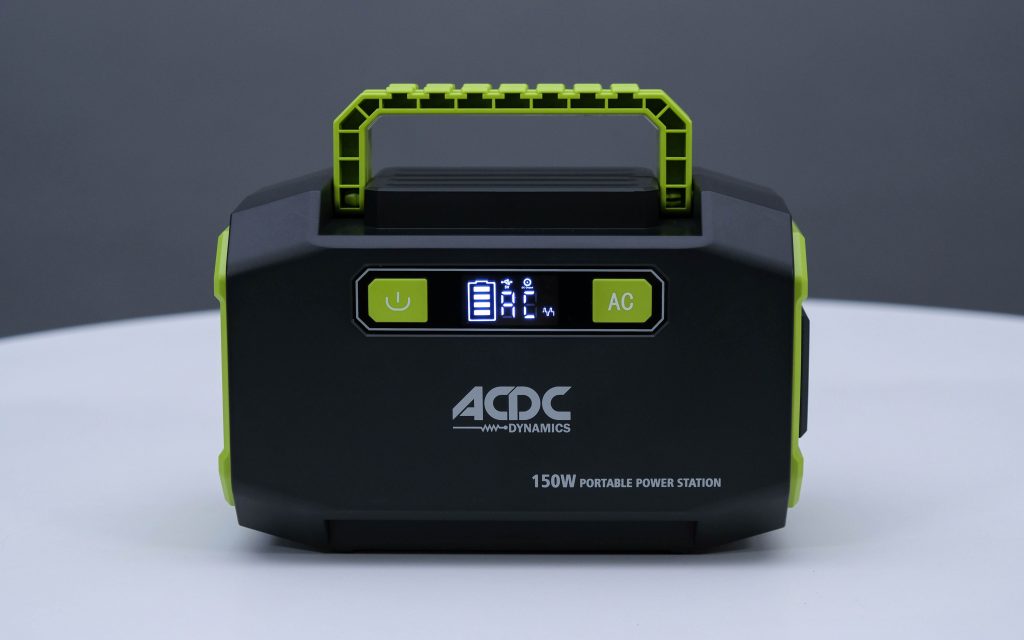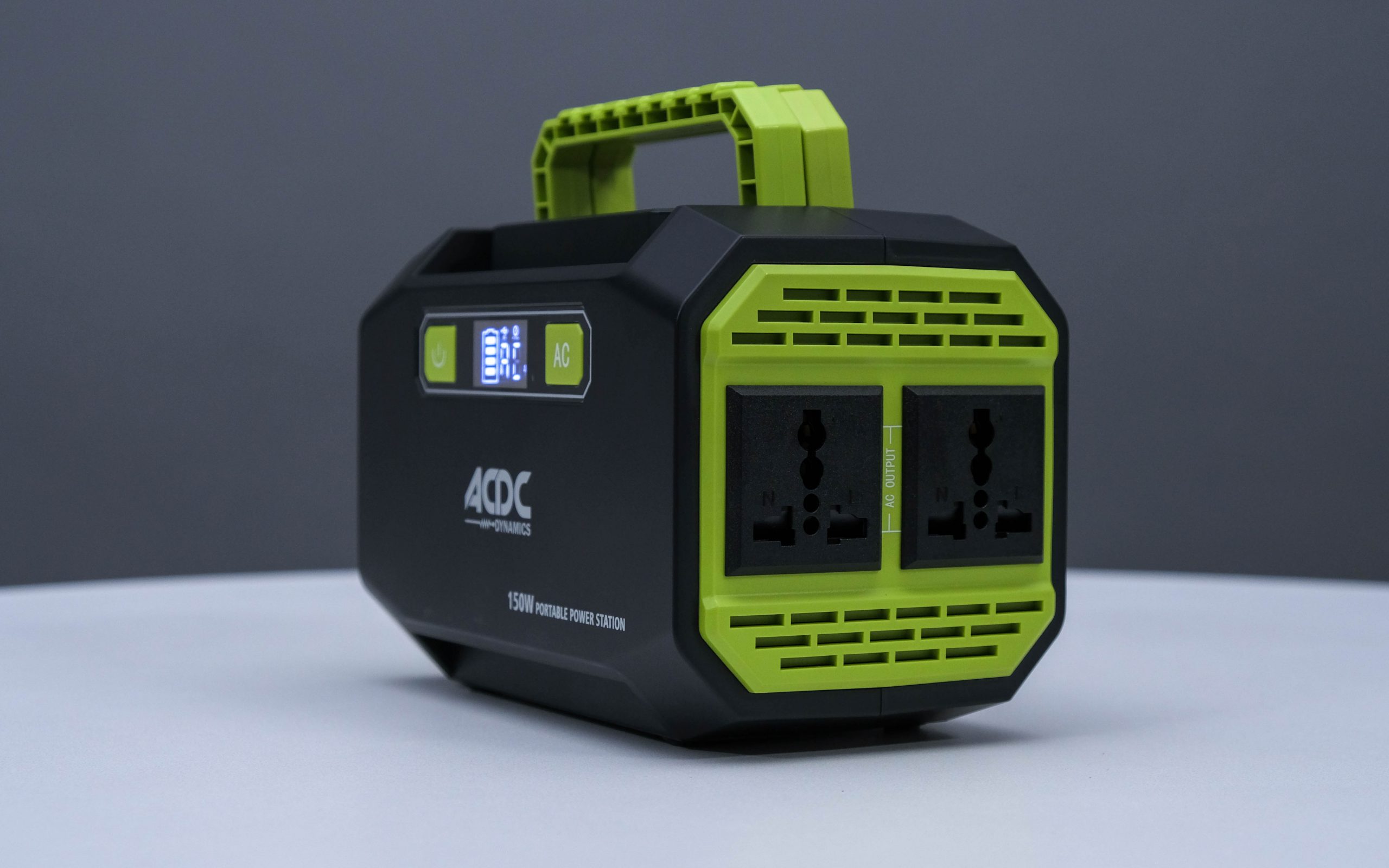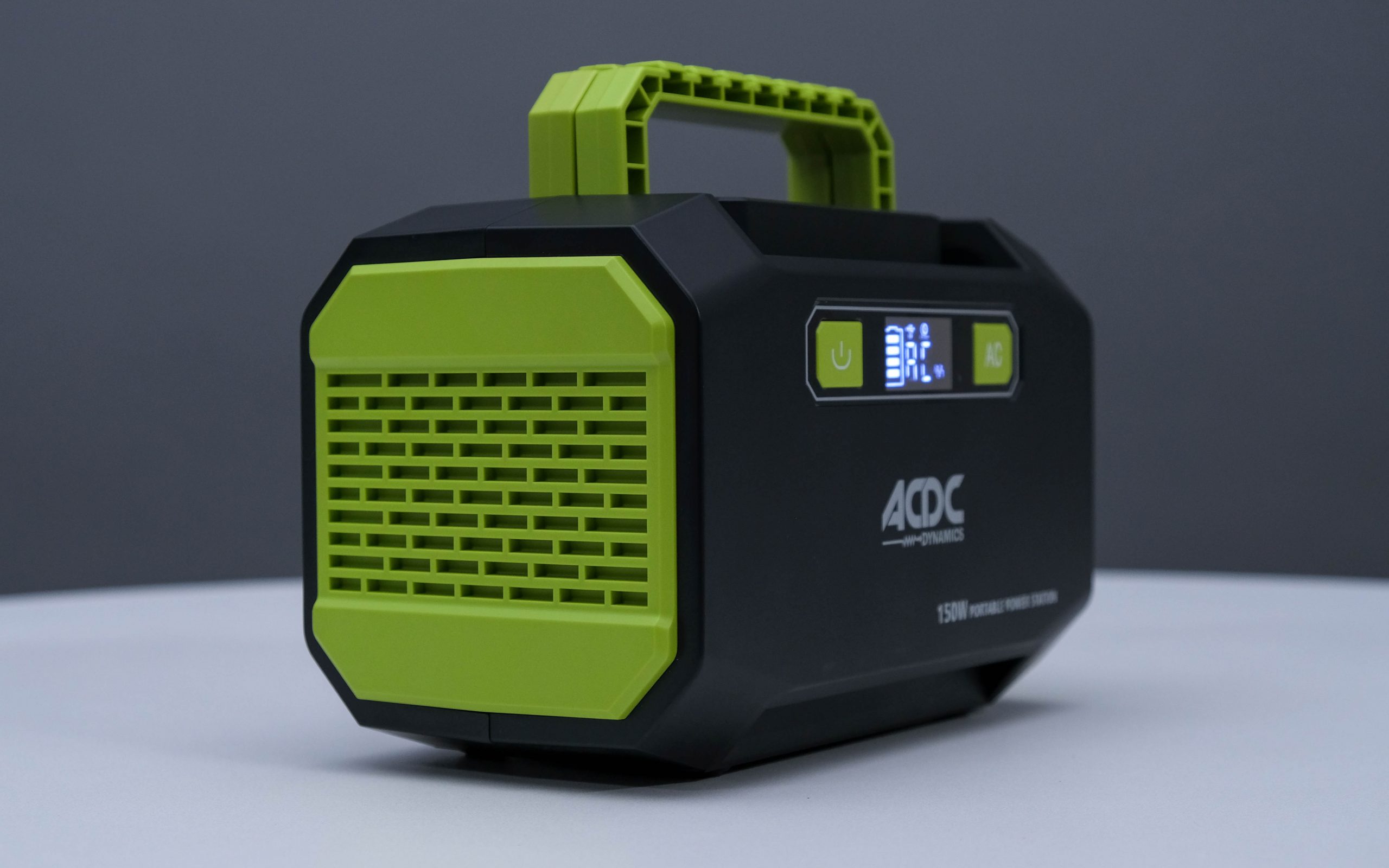Quite often, you'll get what you pay for. Here, you're paying for another round of quality assurance between the factory and the retail shelf. Not everyone is willing to pay that premium, and that's fine. Those who are willing to drop the extra dough will find that their ACDC 150W power station gives fewer problems. Ours certainly showed no signs of any issues during the review. At all. Long term... we'll let you know.
-
Price
-
Ease of use
-
Battery
-
Practicality
Portable battery packs are everywhere these days. With all the competition in the market, the ACDC 150W Portable Power Station — supplied by a local company called ACDC Dynamics — is a bit of an anomaly. For starters, it’s priced a little high. That’s Stuff‘s most obvious complaint about it but it could well be a benefit if you’re willing to take the right view of things. More on that in a second, though.
First, there’s the price you can expect to pay for this 150W power pack. It’s available online for around R4,700, though you can get it for about a thousand bucks cheaper by buying it directly from ACDC Dynamics. The Gizzu 242Wh battery, which is similar in (physical) size to this one, features a larger battery and, at launch, it also featured a similar price but you can pick these up now for about R2,700. You’d think that would make ACDC’s option a non-starter, even at its current R3,770 best price. But you’d be wrong. Why? Quality control.
Nobody’s perfect
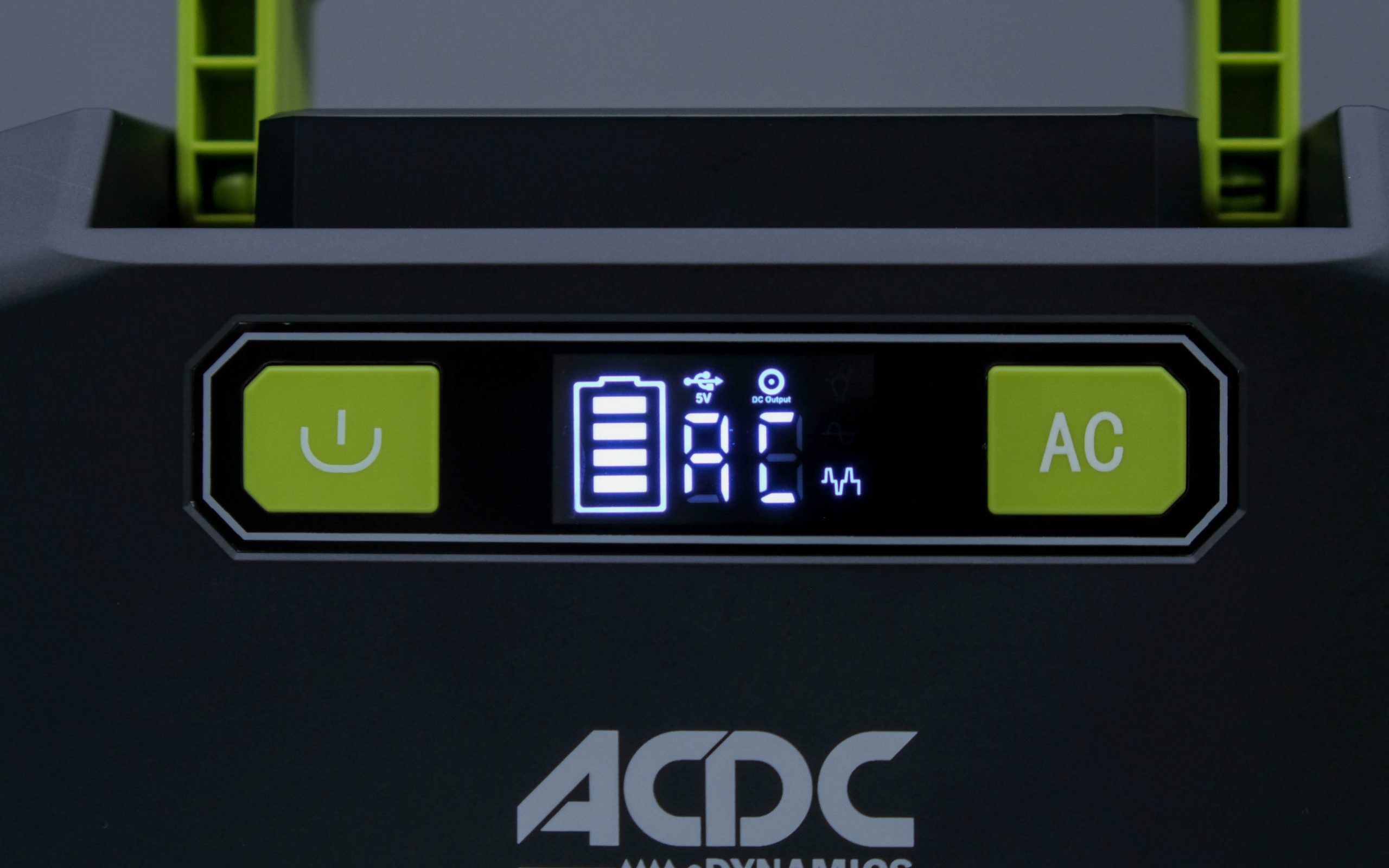 The ACDC 150W (you have no idea how many Angus Young jokes we’re thinking of during this review) turns up in an unremarkable box — besides one feature which we’ll mention in a moment. Inside the box is the battery itself, a rectangular plastic lozenge topped by two plastic strips that act as handles and fold away when the ACDC 150W has found its home. The front end consists of just two buttons — the power button turns it on and off, though you really only need to turn it off. The AC button toggles the AC output but poking that one will also power the whole unit on. They probably could have gotten away with a single button — the AC — since this power pack will turn itself off if nothing is drawing power.
The ACDC 150W (you have no idea how many Angus Young jokes we’re thinking of during this review) turns up in an unremarkable box — besides one feature which we’ll mention in a moment. Inside the box is the battery itself, a rectangular plastic lozenge topped by two plastic strips that act as handles and fold away when the ACDC 150W has found its home. The front end consists of just two buttons — the power button turns it on and off, though you really only need to turn it off. The AC button toggles the AC output but poking that one will also power the whole unit on. They probably could have gotten away with a single button — the AC — since this power pack will turn itself off if nothing is drawing power.
The opposite side is where the DC outputs, USB-A, and charge socket are located, along with the most comprehensive list of dos and don’ts we’ve ever seen on a battery. We’re not complaining, it just seems a little… wasted. Truly stupid people aren’t going to read the instructions. Still, if Legal demands it… The remaining two sides handle the main AC sockets (there are two) and then the thermal vent on the opposite end.
The price is right?
You’ll notice that the plug sockets aren’t compatible with South African plugs. That’s, unfortunately, an issue you’ve got to take care of. Adaptors that will convert this thing to an SA Type D are everywhere but there isn’t one included in the box. In order to use the ACDC 150W properly, you’ve got to buy an accessory. Unless you’re just using it to power your WiFi, in which case the included two-sided DC connector will work just fine. Running something larger, like a laptop or a lamp, calls for the extra purchase, however.
So why the (slightly) high price? It’s not because of the features. In fact, you’re paying a little extra for the remarkable feature on the box. That would be a tiny little sticker signifying that this unit has been individually unboxed and checked by one of ACDC’s technicians. As anyone into telescopes could tell you, the reason Orion scopes cost more despite coming from the same factory as Celestron and Meade’s is that Orion has a guy manually checking each unit before it goes on sale. It takes a little longer and mistakes might still slip through, but by and large, you’re getting what you pay for. And what you’re paying for here is fewer electrical problems. South Africa has enough of those.
On a go-slow
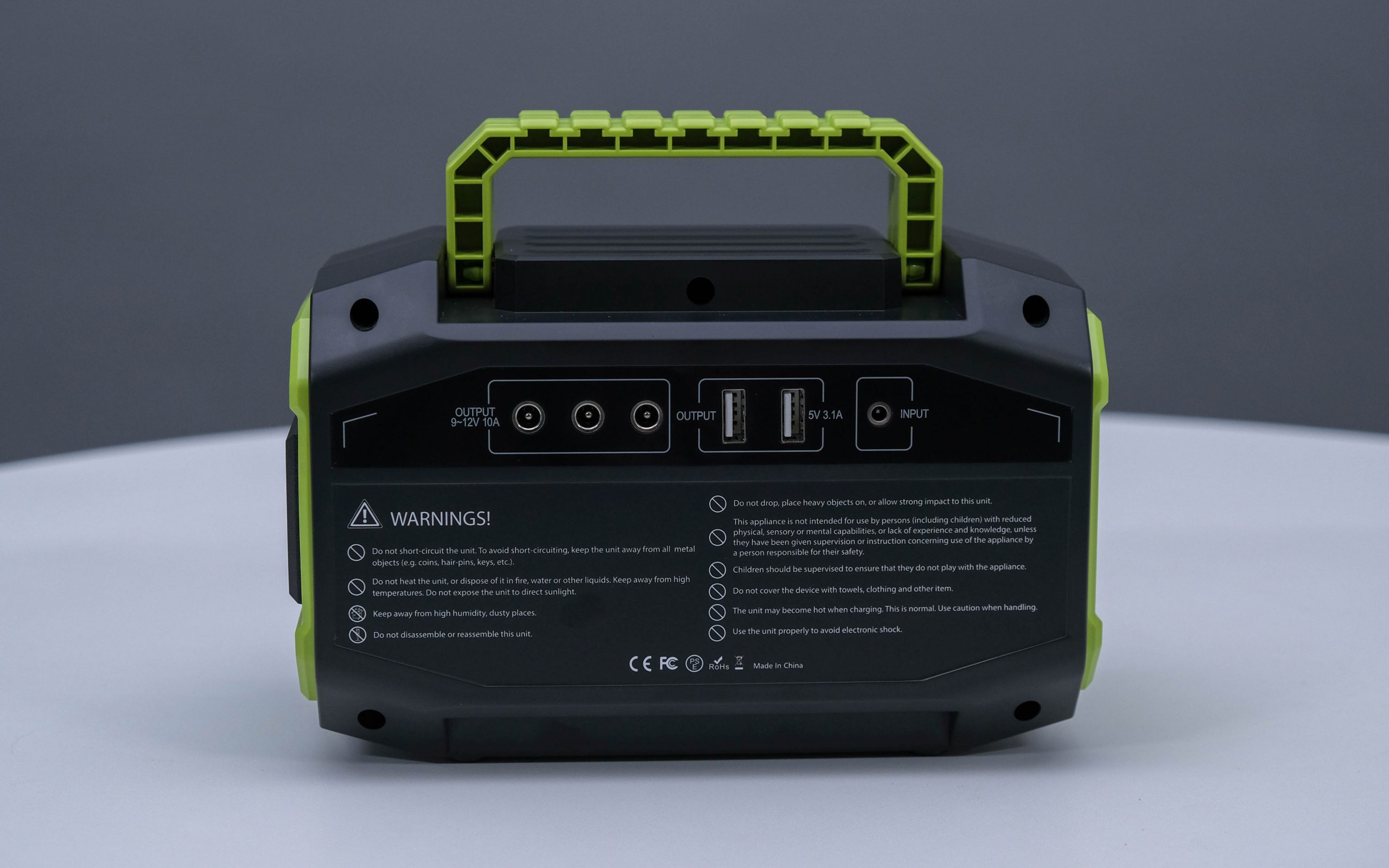 Even so, there are a few other things to be aware of. The ACDC 150W supports an output of up to 150W (obvs.) and its 162Wh (45,000mAh) lithium-ion battery can be beaten in terms of capacity rather easily. It’s also lacking a few other nice-to-have features like a high-speed USB-C port or an integrated LED light. Finally, there’s the recharge speed. ACDC’s hardware supports 30W input, meaning it charges just a little faster than a Samsung smartphone. Since the battery is more than eight times larger than the average Samsung, getting back up to 100% will take hours. Up to eight of them, if you’re charging from zero.
Even so, there are a few other things to be aware of. The ACDC 150W supports an output of up to 150W (obvs.) and its 162Wh (45,000mAh) lithium-ion battery can be beaten in terms of capacity rather easily. It’s also lacking a few other nice-to-have features like a high-speed USB-C port or an integrated LED light. Finally, there’s the recharge speed. ACDC’s hardware supports 30W input, meaning it charges just a little faster than a Samsung smartphone. Since the battery is more than eight times larger than the average Samsung, getting back up to 100% will take hours. Up to eight of them, if you’re charging from zero.
But while it’s operating, it’ll do what you want with absolutely no argument. We suspect that the battery itself, thanks to that slower charging speed, will outlast faster-charging companions in terms of lifespan but that’s something only a long-term test will properly determine. The unit itself makes almost no noise while in operation. When the fans do kick in, they’re subtle enough that it took us a few minutes to realise what it was we were hearing. It’s almost eerie to have that muted noise be the only thing audible during load shedding.
Finally, there’s the option to charge it via solar or a car socket, making it a handy camping companion. It would probably stand up to the odd night-time telescope trip too, since it comes with the required sockets to let you connect a 12V plug via one of the DC outputs. Just saying, you could probably put that Celestron Powertank aside.
ACDC 150W Portable Power Station verdict
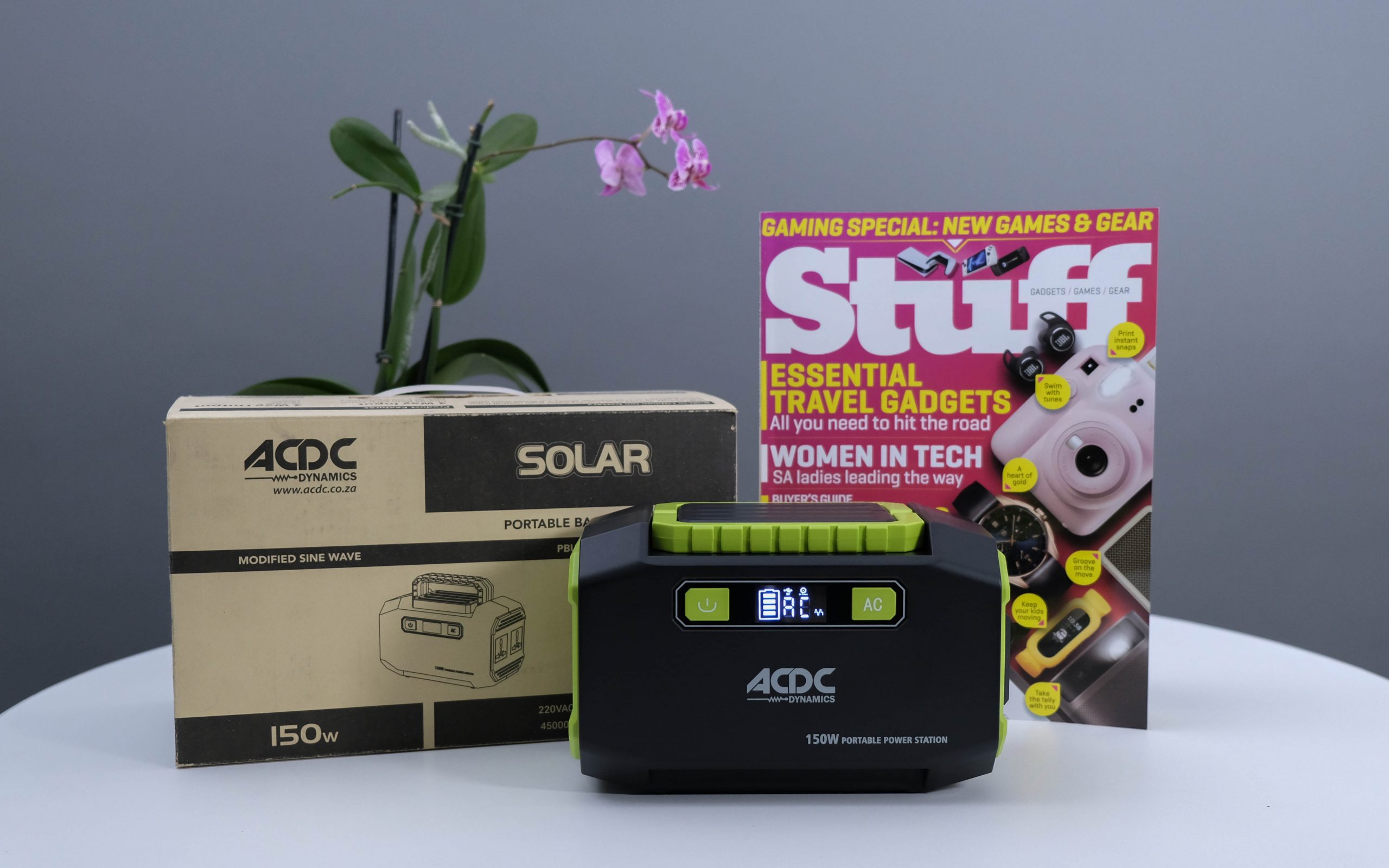 Yes, you can get more battery for less money. But you probably won’t have the same individual attention paid to your hardware, since the company bringing these in weeds out the duds before anything makes it to retail. And if a busted unit does get through, you can be pretty sure that the guys you’re sending it to will a) know what they’re looking for and b) know how to get around it. Even if getting around it just means ‘replacing the damned thing’. You’ll have no problems with this battery in terms of operation and even the price isn’t outlandish, provided you’re willing to purchase it from the source.
Yes, you can get more battery for less money. But you probably won’t have the same individual attention paid to your hardware, since the company bringing these in weeds out the duds before anything makes it to retail. And if a busted unit does get through, you can be pretty sure that the guys you’re sending it to will a) know what they’re looking for and b) know how to get around it. Even if getting around it just means ‘replacing the damned thing’. You’ll have no problems with this battery in terms of operation and even the price isn’t outlandish, provided you’re willing to purchase it from the source.

